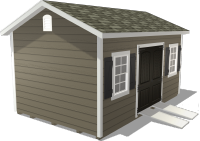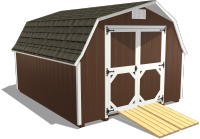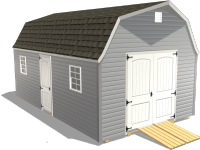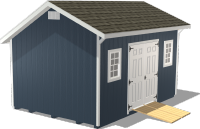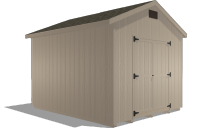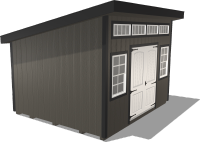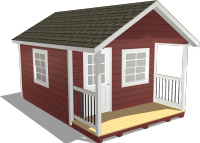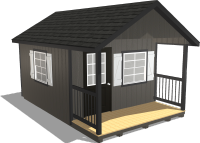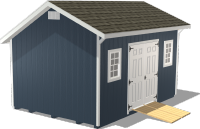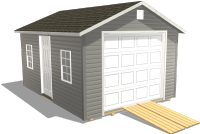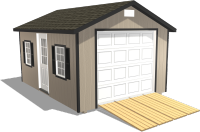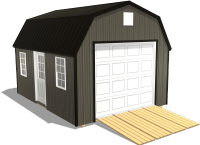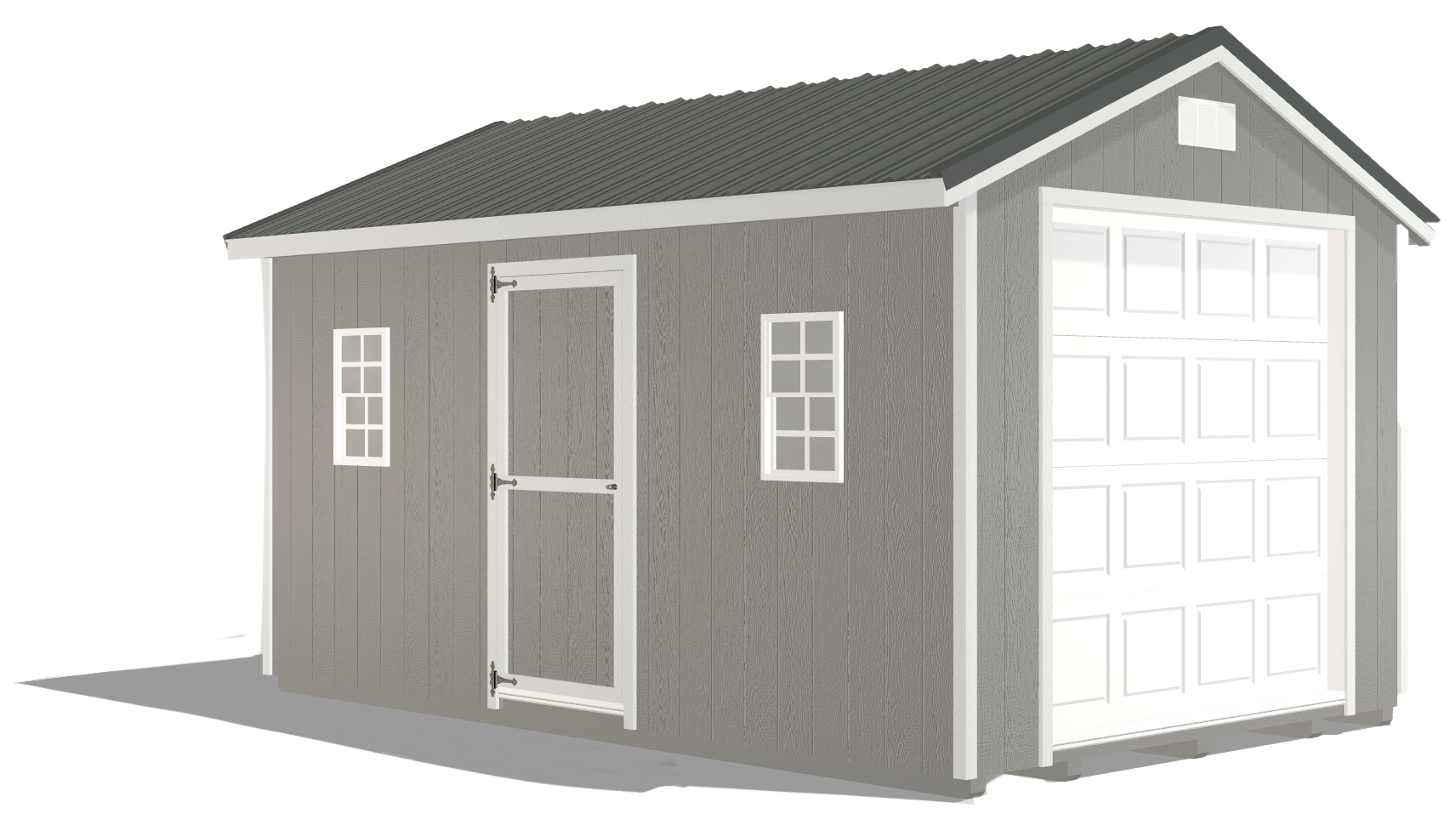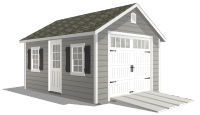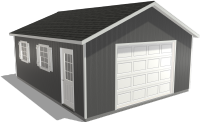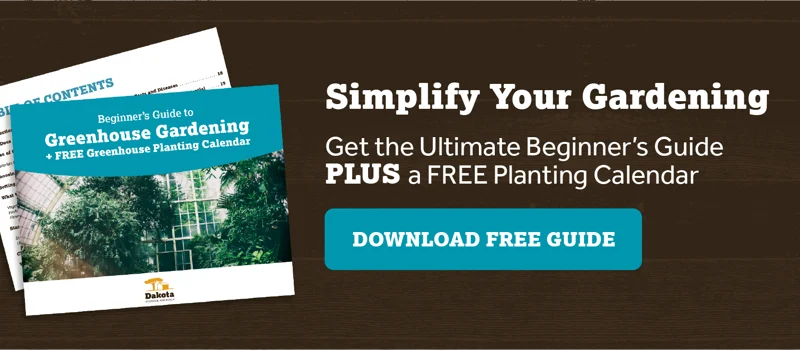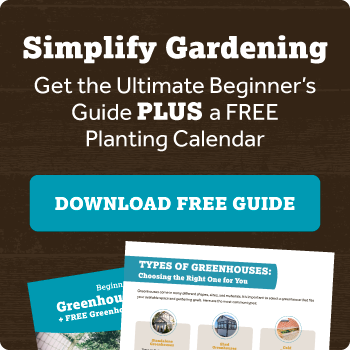Can a Greenhouse Extend Growing Seasons? Yes! Here’s How
by Dakota Storage Buildings, on August 06, 2025

When most gardeners think of greenhouses, they picture snow outside, frost creeping in, and a cozy shelter keeping delicate plants alive. But limiting your greenhouse gardening to just cold seasons means missing out on one of its greatest strengths: using a greenhouse to extend growing seasons.
A greenhouse can be used for much more than the winter. With the right approach, it can support your garden before spring hits full bloom and long after summer’s peak has passed. That means more harvests, fewer weather-related setbacks, and a more resilient garden, all without rethinking your entire growing setup.
Extend Your Growing Season by Relocating Crops to the Greenhouse
As fall creeps in, don’t write off your summer garden just yet. With greenhouse gardening, you can give many warm-weather crops a second wind by shielding them from temperature swings. This extends your harvest and reduces waste by maximizing the investment you’ve already made in your plants.
Tender plants like tomatoes, peppers, and herbs can struggle when temperatures dip below 50°F. By moving them into your greenhouse before the first frost, you extend their productive life by several weeks, sometimes even longer.
Many of these crops can continue ripening and producing in a sheltered environment, giving you fresh produce well into fall. In some cases, with the right setup, they may even last until winter, especially if nighttime temperatures are carefully managed.
To transition these plants successfully:
- Bring them in before nighttime temps consistently drop below 45°F.
- Re-pot if needed to avoid bringing pests indoors.
- Acclimate them gradually by placing them in the greenhouse for a few hours a day over the course of a week.
Ventilation is key during these shoulder seasons. Use roof vents to release excess heat during warm fall afternoons and close things up tightly at night to retain warmth. A small space heater or thermal mass (like water barrels) can stabilize temperatures during chilly nights.
Start Seeds Early for a Stronger Spring Garden
One of the best uses for a greenhouse in late winter or early spring? Getting a jump on seed starting.

While it’s still too cold for an outdoor garden, greenhouse gardening can extend growing seasons. Starting seeds early stretches your gardening calendar and gives you more control over plant health and timing, especially for crops with long growing cycles like tomatoes, peppers, and brassicas.
Depending on your climate zone, you can begin germinating seeds as early as 6–10 weeks before your last frost date. By doing so inside your greenhouse, you provide warmth and light consistency.
This head start is especially helpful for gardeners in shorter-season zones, where every extra week counts. And because greenhouse conditions are more stable, seedlings experience less stress than those started indoors.
Best practices for using a greenhouse to extend growing seasons and starting seeds early:
- Using seed trays and heating mats to maintain consistent soil temperatures.
- Installing grow lights if natural sunlight is still limited.
- Watering consistently but lightly to prevent damping-off disease.
Early seed starting gives your plants a head start on growth, which means earlier blooms and stronger root systems when transplanting time arrives.
That extra development time can make all the difference once your plants move outside, resulting in more resilient crops and faster harvests. Plus, by growing from seed, you get access to a broader range of heirloom and specialty varieties that are not always available in garden centers.
Layering Protection for Fragile Crops
Can a greenhouse extend growing seasons? Yes, with the proper insulation! You may need to add a few extra layers to increase your greenhouse’s insulation even further.
Adding extra protection inside your greenhouse can make a big difference when the temperatures dip. By adding internal layers, you're essentially creating zones of varying warmth, giving each plant exactly what it needs to thrive during colder transitions. This strategy is especially useful in climates with unpredictable spring and fall weather.
Adding row covers or cold frames inside your greenhouse adds extra protection, which is especially helpful in early spring or late fall.
These layers help buffer your crops from cold snaps and temperature swings, which can otherwise stunt growth or cause early damage. Think of them as insurance policies for your most vulnerable plants, helping you hold on to harvests longer and get a head start on the season.

Here’s how this works:
- Row covers trap heat close to the soil, shielding crops like lettuce, spinach, and carrots.
- Cold frames inside your greenhouse can act like mini-greenhouses within the larger space, ideal for starting seedlings or sheltering particularly sensitive plants.
- These tools create microclimates, allowing you to grow crops long past their typical outdoor timelines.
With a few repurposed materials, you can upgrade your greenhouse’s performance. These small additions often pay for themselves in extended harvests and healthier plants, making them a smart investment for any gardener.
Optimize Your Greenhouse for Long-Term Success
A well-managed greenhouse extends growing seasons, but it also dramatically increases your overall yield and plant health when used intentionally. Rather than thinking in terms of single harvests, treat your greenhouse like a rotating space that supports multiple stages of plant growth at once.

Try these tips for maximizing production:
- Succession Planting: After one crop finishes, have the next one ready to take its place.
- Crop Rotation: Rotate crops between seasons to reduce pest and disease pressure.
- Soil Adjustments: Amend your soil regularly, especially after high-yield seasons. Compost, worm castings, and cover crops can help restore nutrients.
- Be Flexible: Monitor and adjust conditions as the seasons change. Install a thermometer and hygrometer to keep tabs on temperature and humidity, and consider using shade cloths or fans during hot spells.
Remember, your greenhouse isn’t a “set-it-and-forget-it” tool.
It thrives when you’re paying attention, making small adjustments, and responding to your plants’ changing needs. With a little intention, your greenhouse can easily become the most productive square footage in your garden.
Ready to Make the Most of Your Greenhouse?
If you’ve been treating your greenhouse as a tool for just the cold months, it may be time for a different approach. With the right strategies, your greenhouse transforms into a year-round extension of your garden. It allows you to ease tender crops through seasonal transitions, start seeds well before spring, and create insulated zones that keep cool-weather plants thriving longer.
Greenhouse gardening doesn’t require a complete overhaul of your routine, just thoughtful planning and a willingness to experiment with timing and technique. Whether you’re looking to boost early harvests, extend late-season growth, or maintain a steadier supply of fresh produce, your greenhouse is one of the most versatile tools you have.
Want to learn more about how a greenhouse extends growing seasons? Download our Beginner’s Guide to Backyard Greenhouses and unlock practical tips to grow smarter in every season.



